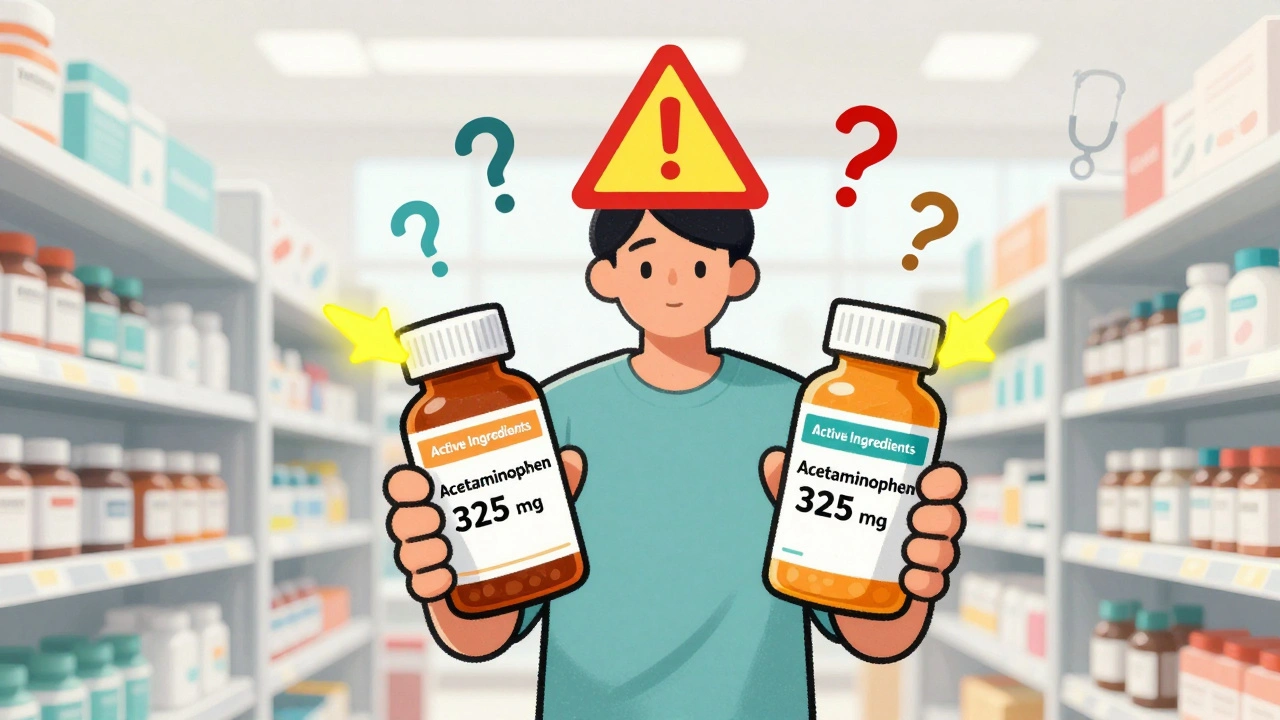Zidovudine, often known under the brand name AZT, stands as one of the heritage drugs in the medical battle against HIV/AIDs. For many who were diagnosed in the early days of the epidemic, this drug was a beacon of hope, a first of its kind to help manage the virus effectively.
While zidovudine has been a crucial part of HIV treatment regimens, it's important to balance its benefits with an understanding of the potential risks involved. Patients and healthcare providers must navigate this balance, taking into account individual health conditions and the overall treatment plan.
Throughout this discussion, we'll explore the medical significance of zidovudine, highlight its advantages, discuss potential side effects, and examine its role in combination therapies that have transformed HIV from a terminal illness to a manageable chronic condition.
- Understanding Zidovudine
- Benefits of Zidovudine for HIV Patients
- Risks and Side Effects
- Monitoring and Managing Side Effects
- Role in Combination Therapy
- Future of Zidovudine in HIV Treatment
Understanding Zidovudine
Zidovudine, also known by its shorthand AZT, holds an exceptional place in the annals of medical history as the first approved treatment for HIV. Its development marked a watershed moment during the fevered pitch of the HIV/AIDS crisis. This antiretroviral medication belongs to the group known as nucleoside reverse transcriptase inhibitors (NRTIs), a class of drugs that play a pivotal role in hindering the replication of the HIV virus within the human body. By interfering with the reverse transcriptase enzyme, zidovudine prevents the viral genome from being converted into DNA, thus playing a crucial block in the virus's reproductive process.
In its development phase, zidovudine was originally synthesized as a cancer treatment in the 1960s, highlighting its scientific journey across medical fields before finding its niche in HIV therapy by the late 1980s. The drug's capacity to significantly reduce the viral load made it a fundamental tool in early HIV pharmacotherapy. Early efficacy in extending the life and improving the health of those afflicted generated profound hope, although it wasn't without drawbacks. Patients often had to navigate a challenging landscape of side effects including bone marrow suppression and anemia. It's these side effects, in fact, which historical trial data suggests led to revised dosing schedules intended to maximize benefits while minimizing harm.
"AZT was a game-changer," said Dr. Anthony Fauci, a leading expert on HIV/AIDS, in a historical interview. "It signified the first step toward taking a previously deadly disease and beginning to turn it into a manageable one."
As science unfolded, zidovudine's applications evolved. In later years, it became a cornerstone of combination antiretroviral therapy (cART), working alongside newer drugs that target the virus in different ways. This combination was key to drastically improving the quality of life for patients. Data shared by the CDC demonstrated a marked reduction in mother-to-child transmission of HIV when zidovudine was administered, affirming its role in public health initiatives. Indeed, this diverse applicability underscores the medicine's versatility and long-standing presence in treatment paradigms.
The medication may not enjoy the lone spotlight it once did, yet its contribution reverberates in the ongoing effort to manage HIV effectively. Armed with years of research, healthcare providers can offer extensive insights into potential resistance issues and safe administration, illustrating the gold standard integration of zidovudine in HIV care protocols. It's clear that understanding this drug is essential for appreciating the strides made in HIV treatment today. As we continue to probe its full spectrum of capabilities, keeping abreast of both historical milestones and current methodologies remains paramount to harnessing its potential fully.
Benefits of Zidovudine for HIV Patients
For many individuals living with HIV, zidovudine represents a pivotal advancement in medical treatment. It's not just a drug; it’s part of a historical transformation in how the world battles one of the most challenging viruses of our time. Originally developed as an antiviral, this medication was the first to receive approval for the treatment of HIV and immediately became the backbone of antiretroviral therapy (ART). The primary benefit zidovudine offers is its efficacy in reducing the viral load in patients. By inhibiting the replication of HIV, it actively lowers the amount of virus in the bloodstream, which is crucial in preventing the progression to AIDS. This action alone stands as a cornerstone of HIV management, as lowering viral load not only improves clinical outcomes but also substantially reduces the risk of transmission to others.
The introduction of zidovudine heralded a new era in the life expectancy and quality for those diagnosed with HIV. In the early days of its use, many saw their lives significantly extended, a stark contrast to the outlook before its availability. One of the remarkable contributions of zidovudine is its use in preventing mother-to-child transmission of HIV. Expecting mothers treated with zidovudine during pregnancy and childbirth can dramatically reduce the risk of passing the virus to their newborns. This benefit has not only impacted individuals but also communities, lowering pediatric HIV cases and creating healthier futures.
"Zidovudine was pivotal; it demonstrated that drug therapy could change the course of HIV," stated Dr. Anthony Fauci, a renowned immunologist who has been at the forefront of HIV research.
Zidovudine has also paved the way for combination therapies. Its efficacy, when used alongside other antiretrovirals, has created a powerful synergy that optimizes treatment outcomes. These combinations have been instrumental in establishing the current strategy for HIV management, which focuses on using multiple drugs to prevent resistance and ensure maximum viral suppression. An important aspect of zidovudine is its inclusion in fixed-dose combinations, which simplify the treatment regimen for patients, enhancing adherence and overall effectiveness. For individuals who faced the daily challenge of managing complex medication schedules, this has been a game-changer, supporting both their physical health and mental well-being. When taken consistently, the drug helps maintain immune function, allowing patients to lead longer, healthier lives without the constant worry of opportunistic infections.

Risks and Side Effects
Navigating HIV treatment with zidovudine necessitates a keen awareness of its potential side effects and risks. Zidovudine, like many potent antiviral medications, can lead to a range of adverse effects, some of which are mild, while others may require immediate medical attention. One common side effect associated with zidovudine is fatigue, which can be quite exhausting for those who are new to the treatment. This sensation is often attributed to the medication's impact on red blood cell production, leading to anemia. Patients might experience a significant drop in energy levels, which can affect their daily activities and overall quality of life. Moreover, headaches and stomach issues such as nausea and vomiting are commonly reported during the initial phases of treatment. These symptoms often reduce the patient's appetite, prompting a need for dietary adjustments to sustain proper nutrition.
More serious side effects of zidovudine involve liver function abnormalities and muscle pain, medically termed as myopathy. Given the liver's role in metabolizing medications, zidovudine can induce increased liver enzymes, signaling liver stress or dysfunction. This condition demands regular monitoring through blood tests to ensure that liver function remains within a healthy range. Myopathy, characterized by muscle weakness or discomfort, might emerge after prolonged use, necessitating discussions with healthcare providers about alternative treatment strategies if the condition persists. Additionally, neurological symptoms like confusion or seizures, although rare, must be promptly addressed as they can indicate severe reactions requiring immediate intervention. The risk of these side effects underscores the importance of adhering to prescribed doses and attending regular check-ups.
It's worthwhile to mention the psychological aspect of side effects, too. Patients undergoing antiviral medication therapy often experience emotional stress stemming from both the illness and the treatment. Adjusting to a medication regimen that changes one's physical state can be challenging, sometimes resulting in depression or anxiety. This calls for not just medical support, but also emotional and psychological counseling to assist patients in coping with the treatment's toll on mental health. A holistic approach involving family, friends, and professional support networks can provide the emotional cushioning needed to manage these challenging aspects of HIV treatment.
According to the Centers for Disease Control and Prevention, "Close monitoring in the management of drug side effects is pivotal for improving patient outcomes and ensuring the long-term success of antiretroviral therapy."
Despite these challenges, it's essential to highlight that not everyone experiences severe side effects. Each person's body reacts differently due to a myriad of factors such as genetics, existing health conditions, and overall lifestyle. Healthcare providers typically assess the risk profile of every patient, tailoring treatment regimens to minimize side effects while maximizing therapeutic benefits. Patients are urged to communicate openly about their symptoms so that adjustments can be made promptly, without sacrificing the efficacy of the treatment.
To summarize, the risk of side effects with zidovudine is a significant consideration in HIV treatment. However, with vigilant monitoring, regular consultations, and lifestyle adaptations, many patients find ways to successfully integrate their treatment into daily life. This process requires a proactive approach, continuous education, and a supportive medical team to navigate the complexities of living with HIV while managing the intricacies of its treatment.
Monitoring and Managing Side Effects
When embarking on a treatment plan that includes zidovudine, patients and healthcare providers need to be keenly aware of the potential side effects that might occur. This antiviral medication, while a cornerstone in HIV treatment, does carry the potential for adverse effects, ranging from mild to severe. Some of the common side effects, like headache and nausea, might subside as the body adjusts, but others may require more careful attention. In exceptional cases, patients can experience more serious side effects such as bone marrow suppression or liver issues, which necessitate regular medical supervision.
To effectively monitor these side effects, regular blood tests are essential. These tests primarily focus on evaluating blood cell counts and liver function, which can be pivotal in preventing and addressing complications early on. Healthcare providers usually create a schedule for these tests at the outset of the treatment, adapting it as needed based on how the treatment progresses and the patient’s individual response. Interestingly, some of these side effects are dose-dependent, emphasizing the importance of sticking to prescribed dosages and not altering them without consulting a healthcare professional.
In managing side effects, open communication between the patient and their healthcare team is crucial. This interaction can help refine treatment plans to ensure that any adverse reactions are swiftly addressed. For instance, adjusting the dosage or changing the medication schedule might mitigate side effects, while in other cases, additional medications might be needed to alleviate symptoms. A balanced diet and adequate hydration can also support overall health and alleviate some common minor issues associated with HIV treatment.
"The importance of monitoring patients undergoing zidovudine therapy cannot be overstated, as timely intervention can prevent more serious health issues," notes Dr. Jane Smith, an infectious disease specialist.
Beyond physiological monitoring, psychological support should not be underappreciated. Managing a chronic condition like HIV is as much about emotional well-being as it is about physical health. Patients may feel overwhelmed, and counseling or peer support groups can provide a valuable network to help them cope with the emotional and mental aspects of living with HIV and managing its treatment.
Here are some effective practices for managing side effects:
- Maintain a consistent medication schedule to avoid fluctuations in drug levels.
- Stay informed about the potential side effects and report them promptly.
- Schedule regular appointments for blood work to monitor health indicators.
- Adopt a healthy lifestyle with a balanced diet and exercise.
- Seek support from healthcare providers or support groups for emotional well-being.
Understanding these elements of treatment can empower patients to play an active role in their health management. The balance of treatment efficacy and manageable side effects is a dynamic one, needing constant evaluation and adaptation, underscoring the personalized nature of modern antiviral medication regimens.

Role in Combination Therapy
The role of zidovudine in modern HIV treatment is most prominently seen in its effectiveness when used as part of combination therapy. This strategy, often referred to as Highly Active Antiretroviral Therapy (HAART), combines zidovudine with other antiretroviral agents to more effectively suppress the HIV virus. The treatment goal is not just to lower the viral load in the patient's system but to prevent the virus from developing resistance to any single medication. By using multiple drugs that target different stages of the virus's life cycle, HAART has substantially improved patient outcomes compared to earlier, monotherapy approaches.
Combination therapy harnesses the synergistic potential of various drugs, and zidovudine plays a critical part due to its mechanism of action. It works by inhibiting the reverse transcriptase enzyme, which is essential for the HIV virus to replicate its genetic material inside the host's cells. When used in conjunction with drugs that inhibit other viral enzymes or pathways, zidovudine helps create a multi-faceted blockade against the virus. This approach reduces the chances that HIV will mutate and develop resistance, which was a significant issue with monotherapy regimens in the past.
"The implementation of combination therapy has turned HIV from a death sentence into a manageable chronic condition," says Dr. Sarah L. Rowlin, an infectious disease expert. "Without medications like zidovudine forming the backbone of this strategy, we wouldn't have achieved the same level of success."
The effectiveness of combination therapy does rely on patients adhering to their prescribed regimen. When a patient consistently takes zidovudine alongside other antiretrovirals, the likelihood of successfully managing their condition increases significantly. Adherence is crucial because lapses in treatment allow the virus to multiply and increase the risk of developing a drug-resistant strain. This emphasizes the importance of healthcare providers working closely with patients to support them in maintaining their therapy schedules.
While zidovudine has been a fixture in combination therapies for many years, its role continues to evolve as newer drugs are developed. There is an ongoing evaluation of zidovudine's place in treatment plans, especially in light of potential side effects. However, for many patients, particularly those who have been stable on it for years, zidovudine remains a key component of their regimen. Understanding the risks and benefits is part of a broader conversation patients need to have with their healthcare providers.
A significant part of ensuring the successful long-term management of HIV involves adapting the combination therapy as an individual's needs change. Newer antiretroviral medications are always entering the market, promising fewer side effects and more straightforward dosing schedules. Yet, for a certain cohort of patients, the trusted efficacy of zidovudine makes it a drug not easily replaced. It holds a unique space in the therapeutic arsenal as both one of the original treatments and a continuously relevant component of combination therapy.
Future of Zidovudine in HIV Treatment
The future of zidovudine in the treatment of HIV continues to evolve as medical science explores new horizons. Zidovudine, as part of the history of HIV treatment, has witnessed significant transformations in how it's utilized. Initially a standalone drug, its role has shifted to being part of combination therapies, which are now the cornerstone of effective HIV management. These therapies work synergistically to lower viral loads to undetectable levels, hence preventing transmission and drastically improving patient outcomes. However, will zidovudine persist as a primary player in the pharmacological landscape, or will it be overshadowed by newer agents with fewer side effects and greater efficacy? This remains an intriguing question in the field.
Research endeavors continue to assess the potential of zidovudine in synergizing with novel compounds that could enhance its efficacy while mitigating side effects. It's not just the standalone efficacy of zidovudine that's critical; it's how it interacts with other drugs in a regimen. Key areas of research include optimizations in dosing, which may reduce side effects like anemia that have been associated with its usage. There's also renewed interest in fine-tuning zidovudine's role among specific demographics, such as pregnant women with HIV, where its use plays an essential part in preventing mother-to-child transmission.
One vital aspect that could shape the future of zidovudine is the challenge of drug resistance. Although newer medications are available, zidovudine's utility in resource-limited settings remains significant where these newer therapies might not be as accessible. According to a recent study published in The Lancet, the emphasis on existing international programs to continually make life-saving medications like zidovudine available cannot be understated.
“Zidovudine’s legacy is engraved not only in past victories against HIV but also in ongoing efforts to provide equitable treatment worldwide,” said Dr. Eleanor Marcus, a renowned researcher in virology.
Furthermore, the affordability and production scalability of zidovudine cannot be ignored. As global healthcare institutions push for more inclusive access to HIV treatment, zidovudine's well-established manufacturing processes make it a consistently reliable option. Naturally, as therapy paradigms shift towards personalized medicine, zidovudine's role could evolve with innovations like gene editing and therapeutic vaccines that promise more permanent solutions to HIV. This does not entirely negate zidovudine's role but rather positions it as a foundational element of HIV history and an ongoing player in complex combination therapies.








Kyle Rensmeyer
January 8, 2025 AT 19:02AZT is just a placebo for the pharma elite 😂
Rod Maine
January 15, 2025 AT 11:02Honestly this whole "heritage drug" hype is overrated, the science is so basic it's almost comical, they definitely hide the real cure somewhere else.
Othilie Kaestner
January 22, 2025 AT 03:02Look, the U.S. made huge strides with AZT, but we shouldn't let foreign agencies dictate our treatment protocols. People need to remember that American innovation saved lives, not some imported solution.
Sebastian Samuel
January 28, 2025 AT 19:02💉💊 AZT was a game‑changer, but the side‑effects can feel like a vampire draining your energy. If you’re not careful, the fatigue will eat you alive 😈.
Mitchell Awisus
February 4, 2025 AT 11:02That’s right, AZT laid the groundwork for modern ART, and it’s still used in many resource‑limited settings; however, adherence is key, and clinicians must monitor blood counts regularly, especially for anemia, and counsel patients on nutrition, while also adjusting doses when liver enzymes rise.
Annette Smith
February 11, 2025 AT 03:02AZT, also known as Zidovudine, was the first drug approved for HIV treatment, and its introduction marked a pivotal moment in medical history. It works by stopping the virus from copying its genetic material, which helps keep the viral load low. Lower viral loads mean the immune system can recover, and patients live longer, healthier lives. Early on, this drug gave people hope when there seemed to be none. The medication is taken daily and is usually part of a combination therapy, which is more effective than using it alone. While it can cause side effects like anemia and fatigue, doctors monitor blood work closely to catch problems early. Over time, newer drugs have been developed with fewer side effects, but AZT remains important in many parts of the world where newer medicines are too expensive. In pregnant women, AZT reduces the chance of passing HIV to their babies, which has saved countless infants. The drug’s long‑term safety profile is well‑studied, giving clinicians confidence in its use. Some patients experience nausea, but this often improves after a few weeks of treatment. Regular follow‑up appointments are essential to adjust doses and manage any complications. The drug’s affordability makes it a valuable option in low‑income settings. Researchers continue to study AZT’s role in new drug combinations, looking for ways to enhance its benefits. Even as the HIV landscape evolves, the legacy of AZT reminds us how far we’ve come. It teaches us that persistence in research can turn a deadly epidemic into a manageable disease. Patients on AZT should stay engaged with their healthcare team and report any new symptoms promptly. Education about the medication empowers patients to stick with their regimen. Ultimately, AZT’s story is one of scientific triumph and ongoing relevance in the fight against HIV.
beth shell
February 17, 2025 AT 19:02AZT’s historical impact cannot be denied; it paved the way for today's sophisticated regimens.
khushali kothari
February 24, 2025 AT 11:02The pharmacokinetic profile of Zidovudine reveals a relatively short plasma half‑life, necessitating twice‑daily dosing to maintain therapeutic concentrations; concomitant administration with other nucleoside analogues may result in synergistic mitochondrial toxicity, a phenomenon well‑documented in the literature.
Brandon Smith
March 3, 2025 AT 03:02Zidovudine’s role in suppressing viral replication is undeniably valuable, yet the moral imperative to minimize patient suffering demands vigilant monitoring for hematologic adverse events.
darwin ambil
March 9, 2025 AT 19:02👍 AZT is still used in many clinics, and patients often report feeling better after the initial adjustment period.
Kelvin Van der Maelen
March 16, 2025 AT 11:02Seriously, the drama around AZT is blown out of proportion; it’s a solid drug that does its job.
Joy Arnaiz
March 23, 2025 AT 03:02One must acknowledge the extensive clinical trials that validated AZT’s efficacy, while also remaining cautious of undisclosed data that may influence public perception.
Christopher Eyer
March 29, 2025 AT 19:02Honestly, the whole AZT hype is just another example of pharma pushing a legacy drug while newer, safer options are ignored. The data is out there, but most people don’t even look at it.
Mike Rosenstein
April 5, 2025 AT 12:02It’s important to recognize that AZT, when used responsibly within a combination regimen, continues to provide life‑saving benefits, especially in settings where newer agents are not readily accessible.
Ada Xie
April 12, 2025 AT 04:02While AZT’s mechanism of action is well‑established, adherence to monitoring protocols is essential to mitigate hematologic toxicity.
Stephanie Cheney
April 18, 2025 AT 20:02Stay hopeful-AZT may have side effects, but with proper support and guidance you can manage them and keep your health on track.
Georgia Kille
April 25, 2025 AT 12:02AZT stays relevant worldwide 🌍, especially where cost matters.
Jeremy Schopper
May 2, 2025 AT 04:02Patients on AZT should undergo routine CBC checks, maintain adequate nutrition, and keep open communication with their care team; this proactive approach helps prevent serious complications.
liza kemala dewi
May 8, 2025 AT 20:02From a philosophical perspective, the evolution of Zidovudine from a groundbreaking monotherapy to a component of sophisticated combination regimens exemplifies humanity's capacity to transform adversity into progress; the drug’s legacy, intertwined with both triumphs and challenges, invites us to contemplate the ethical dimensions of medical innovation, the balance between efficacy and safety, and the enduring responsibility of the global health community to ensure equitable access to life‑saving therapies while continuously striving for improvements that honor the lived experiences of those it serves.